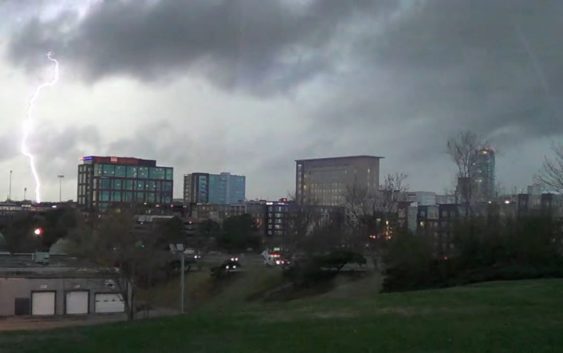- Austin adopts new map that greatly expands area at risk of wildfire
- CenterPoint Energy accelerates infrastructure improvements ahead of hurricane season
- Carolina Hurricanes playoff tickets go on sale Thursday
- Ask the Meteorologist: Why do tornadoes target Tornado Alley, Dixie Alley?
- Nonprofit closes distribution site that aided thousands after Hurricane Helene
Watch vs warning; Here's the difference and what they mean when it comes to severe weather

NORTH CAROLINA (WTVD) — When severe weather is in the forecast it usually includes a watch, a warning or both. Many variables go into how the National Weather Service triggers watches and warnings.
Here’s a look at some of the types of watches and warnings, what they mean, and how you should take action for safety.
Tornado watches and tornado warnings have different purposes, and you should react to each differently, AccuWeather says.
A tornado watch is typically issued hours in advance by NOAA’s Storm Prediction Center (SPC). It means that conditions are ideal for a tornado to form. A watch will not necessarily result in severe weather, AccuWeather explains.
If there is a watch in your area, you should keep an eye on weather alerts and be prepared to act. Make sure you know ahead of time what to do if a tornado hits.
While a watch covers a broad region, a warning is issued by a local National Weather Service meteorologist for a smaller area.
Stay weather aware and connected. Download the ABC11 App right now.
A warning means either a tornado has been spotted or radar has picked one up and if it’s in your area, you should take action and get to a safe place.
If you are in an area with a tornado warning, it’s time to act immediately. Get to a safe space such as a storm shelter. If you don’t have one, the best option is usually in the basement or the middle of a building, away from windows, preferably in an area with reinforced walls.
On rare occasions during significant events such as a tornado outbreak near a heavily populated area, a tornado emergency might be issued. The difference between a warning and an emergency has to do with how widespread the damage could be.
Just as with a tornado warning, those in the path of a tornado emergency should seek shelter and wait for authorities to say when it’s safe to come back out.
Thunderstorm watch vs warning
A Severe Thunderstorm Watch is issued when severe thunderstorms are possible in and near the watch area. It does not mean that they will occur. It only means they are possible.
A Severe Thunderstorm Warning is issued when severe thunderstorms are occurring or imminent in the warning area.
Flash Flood watch vs warning | A Flash Flood Watch is issued when conditions are favorable for flash flooding. It does not mean that flash flooding will occur, but it is possible.
Flash Flood Warning: A Flash Flood Warning is issued when flash flooding is imminent or occurring.
Flood Watch: A Flood Watch is issued when conditions are favorable for flooding. It does not mean flooding will occur, but it is possible.
Flood Warning: A Flood Warning is issued when flooding is imminent or occurring.
WATCH | ABC11 First Alert to Severe Weather Special
What else to know about tornadoes
What to do when you see a tornado while driving
RELATED
Quick tips to help you spot trees that are more likely to fall during severe weather